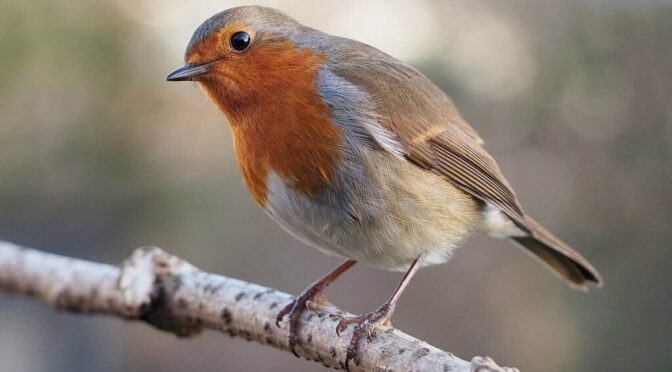Views: 216
The rains are watering these days an island that looked thirsty. The water is very welcome for many of the seeds that were lying dormant, waiting for enough miraculous liquid. Now the greens of the grasses will burst forth, and the fauna will be able to feed.
The incipient autumn is giving us this year curtains of water combined with the full clarity of the star. Days when the colours of the magic arc adorn the sky, and the combination makes it very understandable that ancient peoples sought explanations for such a surprising phenomenon of beauty.
With the beginning of the new season, the birds also arrive that leave behind the cold of the north. One of the best knowns is a round, curious, and beautiful little bird, which very rightly symbolizes the kindness of nature. Whoever meets a robin these days and shows a calm attitude will see a little animal that seems to want to establish a relationship of friendship.
Those years when the traps would catch them by the thousands are behind. The metallic device was half buried and only the worm remained outside—alive and trapped between tiny irons—moving all the time in an attempt to escape. The robins were among the first to arrive and died from the blow of the spring. Generally, they were captured much more abundantly than thrushes.
For a long time now, these traps have been prohibited, the forests have regained extension compared to the mid-twentieth century, and the robins have a less risky life. Whether by naivety or by gratitude, they are birds that tend to approach humans.
The forests are also denser now than before. The charcoal burners no longer remove the shrubs to make the quick fire that the lime kilns required, nor the trunks that they converted into charcoal on the piles. The recovery of more rustic livestock, such as the red cow, increasingly abundant on the island, could be a good resource to graze some forest areas again and transform biomass into meat, while taking advantage of the shade, reducing the risk of fire, and improving soil composition.
The robin benefits from the presence of livestock. The excrements of mammals end up generating worms, beetles, and other little animals, which provide the necessary protein for these birds. Although it also eats wild fruits, such as mastic or wild olive, which will soon reach the point of ripeness to be consumed.
The cordial attitude of the robin, with a chubby appearance because it separates its feathers slightly in order to increase the hot air that surrounds it, can help us look at the world with kinder eyes. Such a small bird may seem like little, but some have crossed all of Europe, from the North Sea or from the warlike east. They have seen very different landscapes, they have evaded predators, and perhaps they have seen refugees and pain.
Now they are in Menorca, and we have the opportunity to treat them well. Especially, it is important to avoid poisoning their food with insecticides. Hopefully, the idea of spraying the forests in the coming months will be abandoned, with the biological catastrophe that this would imply.
Reaching out to nature, prospecting and trying to understand the relationships that occur there, and seeking to favour it instead of preying on it, is one of the best opportunities to generate a better world.
(This text is an adaptation of the original article published by Miquel Camps, as coordinator of territorial policy for the GOB, in the Menorca newspaper on 29/09/2025).

